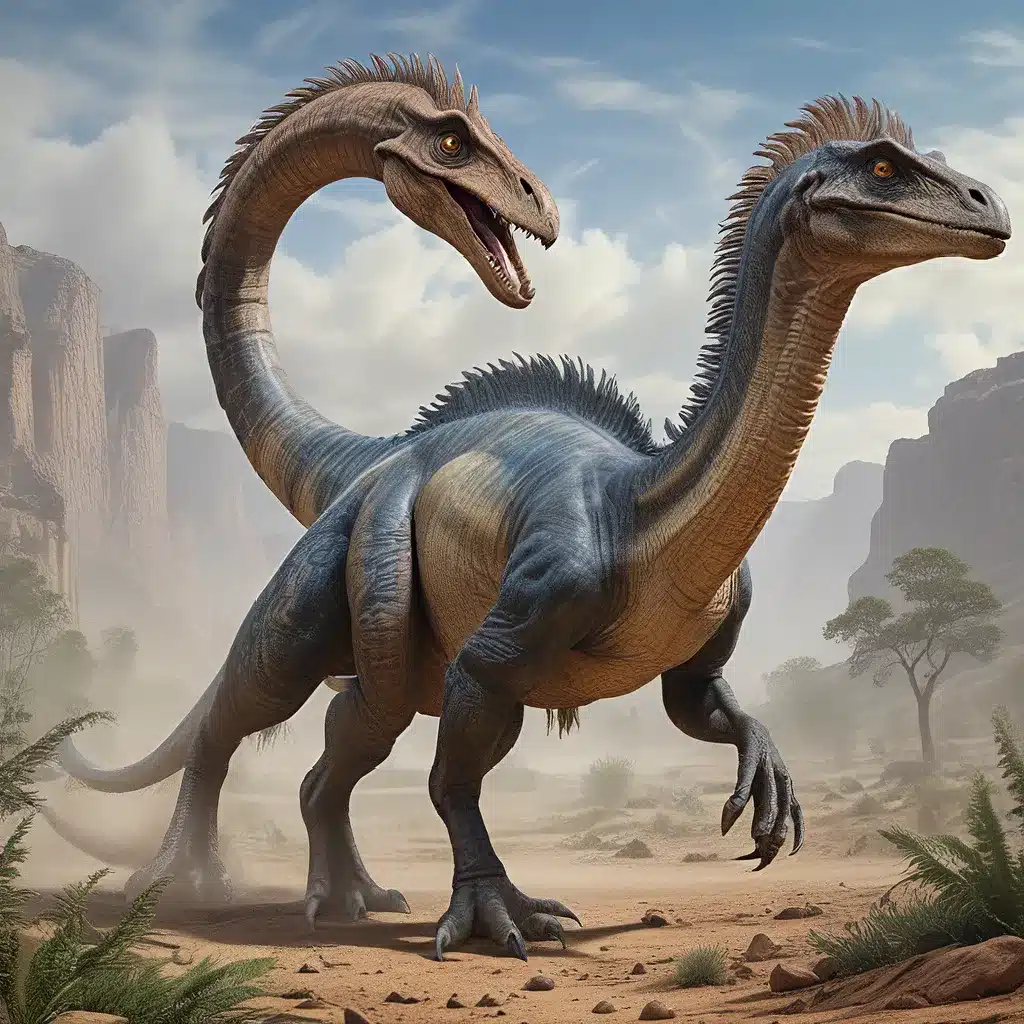
Dinosaurs have long captivated the imagination of scientists and the public alike, with each new discovery unveiling a deeper understanding of these ancient creatures and the world they inhabited. One such enigmatic dinosaur that has recently captured the spotlight is the Therizinosaurus, a remarkable theropod that defies traditional perceptions of dinosaur anatomy and behavior.
Unearthing the Therizinosaurus
The Therizinosaurus, a member of the therizinosaur group, is a true outlier among dinosaurs. Discovered in the Gobi Desert of Mongolia in the 1940s, this massive herbivore boasted an impressive array of features that set it apart from its contemporaries. Its most distinctive trait was its massive, sickle-like claws, which could reach up to three feet in length, dwarfing even the formidable talons of the Velociraptor.
These impressive claws have long puzzled paleontologists, as they seemed ill-suited for the typical predatory behaviors associated with theropod dinosaurs. Recent discoveries have further added to the Therizinosaurus mystery, with evidence suggesting that it may have also been covered in a feathery coat, much like its theropod cousins.
Feathered Herbivores: A Surprising Evolutionary Path
The idea of a feathered, herbivorous dinosaur may seem counterintuitive, but it is a testament to the incredible diversity and adaptability of these ancient creatures. The Therizinosaurus, along with other members of the therizinosaur group, represent a fascinating evolutionary path that challenges our conventional understanding of dinosaur biology and behavior.
Traditionally, feathers were thought to be a trait exclusive to predatory theropod dinosaurs, which were believed to have evolved them for flight or display purposes. However, the discovery of feathered, herbivorous therizinosaurs has forced scientists to reevaluate this assumption.
Emerging evidence suggests that feathers may have served a variety of functions beyond just flight, including insulation, display, and even camouflage. This revelation has transformed our understanding of the evolutionary journey that led to the emergence of birds, with therizinosaurs potentially playing a crucial role in this transition.
The Enigmatic Claws of the Therizinosaurus
Perhaps the most captivating aspect of the Therizinosaurus is its remarkable claws, which have long been the subject of intense scrutiny and speculation. These massive, sickle-like appendages were once thought to be formidable weapons used for hunting, but the discovery of their herbivorous diet has challenged this assumption.
Recent studies suggest that the Therizinosaurus’ claws may have served a variety of purposes, from stripping vegetation to self-defense against predators. The sheer size and power of these claws have also led researchers to believe that they may have played a role in establishing dominance within the species, potentially used for display or intraspecific competition.
Furthermore, the presence of these unique claws, combined with the evidence of feathers, has led some scientists to propose that the Therizinosaurus may have been a skilled climber, using its claws and feathered wings to navigate the dense forest canopies of its habitat.
Solving the Mysteries of the Therizinosaurus
As our understanding of the Therizinosaurus continues to evolve, researchers are faced with a multitude of unanswered questions about this intriguing dinosaur. From its unique feathered coat to its enigmatic claws, the Therizinosaurus remains a tantalizing puzzle that promises to reveal even more about the incredible diversity and adaptability of dinosaurs.
Through ongoing excavations, advanced imaging techniques, and interdisciplinary collaboration, the scientific community is steadily unraveling the mysteries of the Therizinosaurus and its place within the broader evolutionary tapestry. Each new discovery promises to shed light on the complex lives and behaviors of these ancient giants, challenging our preconceptions and expanding our knowledge of the prehistoric world.
As we delve deeper into the study of the Therizinosaurus and other feathered dinosaurs, we are not only uncovering the secrets of the past but also gaining a more complete understanding of the evolutionary processes that have shaped the natural world we know today. The journey of discovery continues, and the Therizinosaurus remains a captivating ambassador for the wonders of the prehistoric realm.


